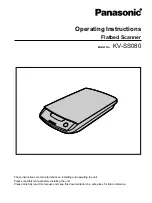
1.3. Basic Specifications
Table 1-4:
AGV-HP(O) Series Specifications
AGV10HP(O)
AGV14HP(O)
AGV20HP(O)
AGV30HP(O)
Optical Performance
(1)
Beam Aperture
10 mm
14 mm
20 mm
30 mm
Maximum Scan Angle
±20°
Beam Displacement
12.6 mm
16.5 mm
23.2 mm
35.7 mm
Feedback Resolution
0.012 µrad (25 bit)
Dither
(2)
(Minimum Incremental
Motion)
< 0.4 µrad
RMS
Accuracy
50 µrad pk-pk
Repeatability
(3)
0.4 µrad
RMS
Gain Error
0.05 mrad
Non-Linearity
0.005%
Dynamic Performance
Tracking Error
0 µsec
Peak Acceleration
(4,5)
288,000 m/s
2
224,000 m/s
2
80,000 m/s
2
56,000 m/s
2
Continuous Acceleration
(4,6)
75,200 m/s
2
56,000 m/s
2
20,800 m/s
2
19,200 m/s
2
Positioning Speed
(4)
75 m/s
75 m/s
50 m/s
50 m/s
Marking Speed
(4,7,8)
5 m/s
Jump & Settle Time, 1 mm Move
(4,9)
270 µsec
270 µsec
450 µsec
700 µsec
Stability
Long-Term Drift
(3)
Offset
10 µrad/12 hrs
15 µrad/24 hrs
Gain
10 ppm/24 hrs
Thermal Drift
Offset
10 µrad/°C
Gain
1 ppm/°C
Mechanical Specifications
Mass (AGV-HP)
4.1 kg
4.4 kg
5.1 kg
5.8 kg
Mass (AGV-HPO)
2.5 kg
2.6 kg
2.9 kg
3.1 kg
Material
Aluminum (Black Anodize and Blue Paint)
Mean Time Before Failure
20,000 Hours
NOTE: All specifications are per axis unless noted.
(1) All angles are optical unless otherwise noted.
(2) Without -AC air cooling option.
(3) After an initial four hour warm-up, expect an ambient temperature variation of < ±0.5°.
(4) Typical performance with f = 160 mm F-Theta objective.
(5) Based on the maximum rated current of the motor.
(6) Based on the rated rms current of the motor with -WC water cooling option; maximum continuous acceleration is 70% of
this value without water cooling.
(7) Achievable with <1% velocity error over continuous velocity portion of move.
(8) Marking speed is dependent on allowable tracking error.
(9) Settled to within 1% of move distance.
AGV-HP(O) Hardware Manual
1.3. Basic Specifications
www.aerotech.com
21
















































